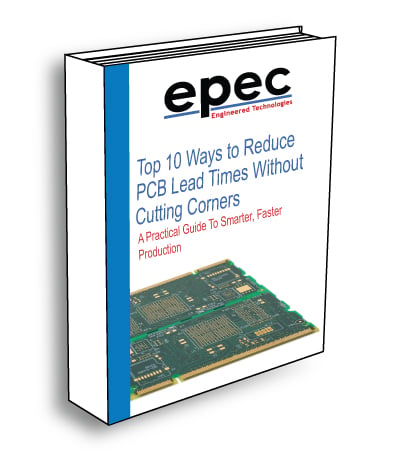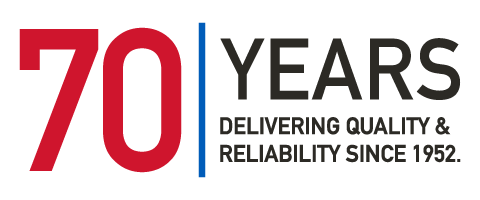Printed Circuit Board Engineering Services
A Manufacturing Mentality
For more than 70 years, Epec has continued its tradition of perfection in engineering and manufacturing printed circuit boards for the customers in various industries. Our years of manufacturing experience provide us with a competitive edge when it comes to PCB layout and design. From a simple, single-sided board to a complex multi-layer, double-sided surface mount design, our goal is to provide you with a design that meets your requirements and is the most cost-effective to manufacture.
Reverse Engineering and Scanning
With the consolidation of the printed circuit board industry over the last few years, many of our customers find themselves needing to order boards, but they have no electronic data. Their previous supplier may have gone out of business, and the only copies of the artwork or electronic data have been discarded.
At Epec, we can create electronic data from virtually anything, including, films, drawings (DXF), 1-to-1 paper plots, and even boards themselves. When supplying a printed circuit board for reverse engineering, we can scan 1- and 2–layer PCBs only. Multilayers are excluded for scanning the printed circuit board; there is no way to scan the internal layers. Providing us with any one of these will allow our team to provide you with a complete data set, including drill chart, dimensional drawing, and Gerber files.
*The PCB supplied must not contain components for scanning. Please remove all assembled parts.
We have more than 30 years of experience in creating electronic data from all types of media using our state-of-the-art scanning equipment and software. We have developed a systematic process to make sure that all the board features are double checked to ensure that everything has been replicated properly. We understand how important it is to get even the smallest details right when it comes to our customers circuit boards.
Please contact us for more specific details around our design and manufacturing guidelines.
Printed Circuit Board Design
Epec offers complete design service for printed circuit boards. From conceptual to complex, we can assist with whatever your current needs are. New designs in early development, schematic capturing, PCB design and routing, library, and database translation services, Epec has it all.
We have the experienced team you need to support all your printed circuit board, flex, and rigid-flex projects.
- Single and double-sided
- PCBs multi-layer (up to 40-Layers)
- High-density surface mount
- Microvia, via in pad, laser microvias, blind/buried vias
- High-speed, multi-digital designs
- Controlled impedance, differential pairs
- Analog, digital, and mixed designs
- RF/microwave
- Impedance control, filters, antennas, guard rings, shielding
- Impedance controls
- Matched line lengths
- Differential pairs
- Auto routing for dense multi-layer designs
- ITAR - space and military
- Flex and Rigid-Flex PCBs
Schematic Translation
We support a vast amount of technologies. Not all design software is compatible with each other. When it comes to customer supporting technologies, having diverse software is something we believe is necessary to aide our customers to move forward quickly.
- To PADS Logic from:
- OrCAD, Protel, P-CAD, DxDesigner, Altium
- To DxDesigner from:
- ORCAD, Protel, P-CAD, PADS Logic
- To P-CAD/Altium from:
- OrCAD, Protel, DxDesigner, PADS Logic
Printed Circuit Board Translators
- To PADS Layout form:
- Protel, P-CAD, Allegro, Altium, OrCAD
- To Altium Designer from:
- Protel, P-CAD, Allegro, PADS Layout, OrCAD
- To Allegro Layout from:
- Protel, P-CAD, PADS Layout, Altium, OrCAD
We will supply everything you need to begin your project from quote of PCB through assembly, a solid complete package of deliverables.
Printed Circuit Board Deliverable
- Fabrication and assembly drawings
- Gerber layers
- Pick and place data generation
- In-circuit test data generation
- Excellon drill data
IPC Specifications for PCB Design – For Reference
IPC-2221: Generic Standard on Printed Board Design
IPC-2221 is the overarching standard that provides comprehensive guidelines for PCB design, applicable to all types of printed circuit boards. It covers almost every aspect of PCB design, ensuring reliable electrical performance and manufacturability. Key areas addressed by IPC-2221 include:
- PDN (Power Distribution Network) Layouts: Guidelines for designing power planes and ensuring proper power distribution across the PCB to minimize noise and voltage drops.
- Conductor Clearance and Spacing: Standards for minimum spacing between conductors to avoid electrical shorts, ensure safety, and maintain signal integrity.
- Impedance Control: Recommendations for controlling impedance in signal traces to prevent signal degradation in high-speed circuits. This includes specifying trace width, spacing, and layer stack-up for controlled impedance designs.
- Thermal Management: General practices for managing heat dissipation and ensuring adequate thermal relief in the design.
- Mechanical and Structural Considerations: Basic guidelines for board thickness, size, and other mechanical aspects that affect PCB durability and performance.
IPC-2223: Standard for Flexible Printed Board Design
IPC-2223 is dedicated to the specific requirements of flexible PCB (flex PCB) designs. This standard focuses on the unique challenges associated with designing flex PCBs, which are used in applications requiring flexibility, dynamic bending, or reduced weight. Key topics covered include:
- Pad and Via Placement: Guidelines for placing pads and vias in flex circuits to avoid stress concentration and ensure mechanical reliability.
- Bend Radius Requirements: Minimum bend radius specifications to prevent damage to the conductors and dielectric material during flexing, particularly in dynamic applications.
- Coverlays and Stiffeners: Requirements for using coverlays, which protect the conductors and provide insulation, and stiffeners, which add mechanical strength to flex circuits.
- Layer Stacking and Adhesive Use: Recommendations for layer stack-ups and adhesive materials that maximize flexibility and reliability.
- Design Rules for Dynamic Flexing: Special considerations for designs that will undergo repeated flexing, such as the need for optimized conductor patterns and stress relief features.
IPC-2222: Standard for Rigid Organic Printed Board Design
IPC-2222 provides detailed specifications for designing rigid organic printed circuit boards. It offers more specific guidelines than IPC-2221 for rigid PCB designs, focusing on factors that enhance manufacturability, performance, and reliability. Some of the critical areas covered by IPC-2222 are:
- Material Selection: Guidelines on selecting appropriate materials for different layers, including core and prepreg materials, based on thermal, electrical, and mechanical properties.
- Hole Size and Plating Requirements: Standards for hole size, annular ring dimensions, and plating thickness to ensure reliable electrical connections and robust mechanical support.
- Interconnect Density and Design: Recommendations for designing high-density interconnect (HDI) PCBs, including microvia placement, trace width, and spacing rules.
- Mechanical Properties and Strength: Specifications for mechanical features such as board thickness, layer stack-up, and copper thickness that affect the PCB's overall strength and rigidity.
- Thermal and Electrical Performance: Guidelines for ensuring optimal thermal dissipation and electrical performance in high-power and high-speed applications.
Each of these IPC standards plays a crucial role in ensuring that PCB designs are reliable, manufacturable, and compliant with industry best practices. Following these standards helps designers optimize PCBs for performance, cost-effectiveness, and longevity in their specific applications.
PCB Expertise for Reverse Engineering
Don't let obsolete data hold you back. Tap into our 70+ years of PCB expertise for reverse engineering and full-spectrum design solutions.
Request a Quote Request Design Support Request More Information



